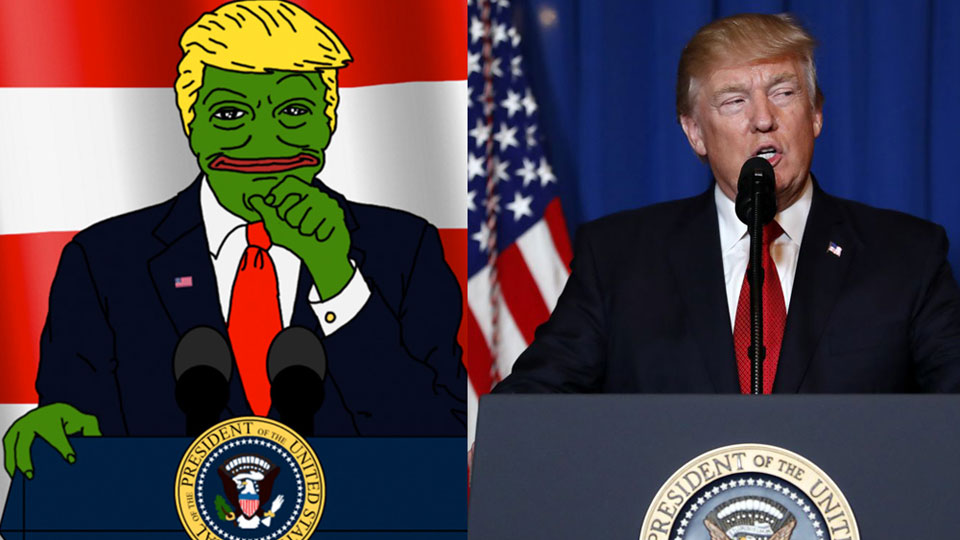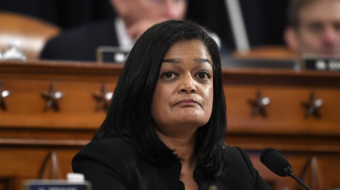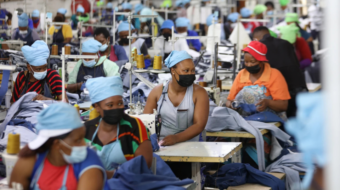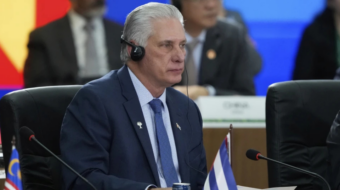
During the first week of August two of the worst mass shootings took place in the nation’s history. Evidence indicates that both shootings were fueled by racist and white supremacist ideology. These massacres are part of a dangerous trend since 2016 of a rise in hate crimes in the U.S. by over 17 percent. Yet, right-wing pundits like Tucker Carlson would like you to believe that the danger of white supremacy is a “hoax” and “conspiracy theory.” In reality, Carlson’s ahistorical “analysis” willfully ignores the important role that white supremacy plays in both the exploitative capitalist system we live under and the current rise of global fascism, which are dangers to us all.
White supremacy and labor
Capitalism itself is built on the unpaid labor of slaves. White supremacy is the ideological underpinning of a whole system of inequality which amounts to a racial social division of labor. It is replicated and reflected on every level in the economy: The last to be hired and the first to be fired, the huge wage gaps, the discrimination in housing and health care are all ways in which white supremacist ideology is reflected in the economy. The sub-prime mortgage scandal, for example, saw white supremacist ideology making it ok to scheme financially to rip off black homebuyers in what became the largest ever theft of property in American history. It is a ruling class ideology that results in many horrific features – all with the purpose of keeping the ruling class in its position as the ruling class. It is so much more than one racist uttering racist statements and another individual acting on that to shoot up a mall.
In addition to laying the basis for the super exploitation of people of color, it results in more thorough exploitation of the white working-class majority than would otherwise be the case if white supremacist ideology were not present. It results in downward pressure on the wages, the living conditions and the health care of white workers and it disarms white workers in their fight against their own oppression. If they were not affected by the poisonous ideology they might join with people of color in the fight against common exploitation.
The United States, since its inception, has depended on labor in order to flourish. White supremacy has played a key role, since the days of the 13 colonies, in helping create the conditions that create cheap labor.
The practice of indentured servitude in the early 1600s was born out of the idea of low-cost labor to help the colonies thrive. An indentured laborer was an unpaid employee who was bound by a signed or forced contract to work for an employer for a number of years. When the practice first began there was no division based on race. Black and white indentured servants worked alongside each other and were mostly treated the same.
Early colonists did not think of themselves as “white.” They saw themselves as Christians or Englishmen, or in terms of their social class. One was either nobility, gentry, artisans, or servants.
This all changed when indentured servants, of all skin colors, began joining together to demand better treatment and the land owed to them once freed from their contracts.
Wealthy English landowners soon realized they needed servitude that had no rights and that they needed a way to divide indentured servants from rising up. Instead of division by religion, they settled on skin color, as a way to easily recognize the new slave class they aimed to create.
In 1641, Massachusetts became the first colony to legally recognize slavery. In 1662, Virginia decided all children born in the colony to a slave mother would be enslaved. Slavery would go beyond being a life-long condition for one individual, to a status that would be passed on, like skin color, from generation to generation.
In this time where legal distinctions were now made between white and Black, poor white landowners, indentured servants, and farmers were afforded a few additional rights. By permanently enslaving people of African descent and giving poor white people a few new rights and status, the wealthy elite hoped to separate the two groups and make it less likely that they would unite again in resistance.
White laborers were told they were of “higher” status than Black laborers. Poor whites were encouraged to identify more with rich white people rather than with Black slaves. Thus, the idea of the white race was invoked to distinguish one group as higher than the Black people suffering from perpetual enslavement.
The idea of white supremacy was born through legal means to not only divide working people but to enslave – for centuries– people of African descent in this country. This enslavement of Black people helped formed the building blocks of capitalism and the world economy of today.
White supremacist ideology played a key role in the implementation of this oppression. It started out as a way to maintain power and control by the wealthy over the majority of the population and continues even now with these and the other detrimental effects already mentioned.
White supremacy, terror, and policy
Violence and white supremacy have gone hand in hand for centuries. Domestic terrorist groups, such as the Ku Klux Klan, and politicians who aligned themselves with its ideology of racism and white supremacy, used corruption, violence, and terror to undermine the progress made during Radical Reconstruction after the Civil War.
Elite whites encouraged racism among poor whites for fear they would join forces with newly freed Black people. Rich whites formed and ran the Ku Klux Klan and poor whites joined it against their own self-interests.
Today, as the nation moves towards a future where a majority of the population will be categorized as non-white, we have seen a resurgence in this need to intimidate and assert power over marginalized groups and people of color. This emboldening of hate and the idea of white supremacy have been fueled by the current occupant in the White House– Donald Trump.
In his 2016 bid for the presidency, Trump relied on the tried and true Republican Party campaign strategy of racial resentment. He convinced many white working people that their problems weren’t in an exploitative economic system, but in supposedly losing their authority to people of color.
This rhetoric has not only resulted in the emboldening of racist violence, but it has also affected the laws governing our country. White supremacist, racist, and xenophobic ideas are at the heart of Trump’s policies. This has been displayed in a variety ways, from imposing a travel ban on people traveling from Muslim majority countries to the modern-day internment camps that separate immigrant children from their parents at the Mexican border.
Many lives are in peril due to these policies, as Trump prepares to run his 2020 campaign on the principles of white supremacist rule. He can condemn white supremacy (once) in a speech all he likes, but his actions ensure power to the wealthy elite.
In the context of today’s world, it needs to be understood that Trump, and his use of white supremacy, is a manifestation of a far-right global movement that aims to keep power in the hands of the few at the detriment to the many.
White supremacy, global fascism, and the far right
Trump’s strategy to scare people, in this case white people, by conjuring up dire threats posed by enemies, foreign and domestic, is right out of the fascist playbook. It is something we’ve seen in the past, such as in Nazi Germany, and are seeing now with a dangerous resurgence across the globe.
Adele M. Stan of Right Wing Watch noted at the 2019 Netroots Nation conference that “the far right is not fringe; it is at the heart of power.” When we think of the far right and white supremacy here in the U.S. we think of Trump. Trump actually exists because of a global movement that targets marginalized groups.
In the U.S., Europe, and Brazil we see it through the targeting of people and immigrants of color.
The Brexit referendum in Britain, although supported by much of the Left because of popular resentment of austerity policies pushed by the European Union, was also used by the anti-immigrant right wingers who made appeals to white working-class people, claiming they were suffering economically under the burden of mass immigration.
In Brazil the newly installed ultra-right president, Jair Bolsonaro, campaigned on sentiments similar to Trump of making Brazil “great again,” and targeting Brazil’s indigenous groups, descendants of slaves, and the LGBTQ community. Since his reign began it has included a crackdown on labor unions, and plans to reduce the minimum wage. (Again, as in the US, white supremacist ideology is the tool used to set back the entire working class.)
Yet, in understanding that white supremacy has historically been used as a tool to secure power through division by those already in power, we can then have a global perspective in seeing how white supremacy is connected to fascism even when not based on racial division. Such is the case in India with Hindu extremism led by right-wing Prime Minister Narendra Modi.
Although in India the oppression is not based on white supremacy, the sentiment to keep power in the hands of a few by dividing the majority is inspired by it. This is the case so much so that admiration for Nazism, often reframed with a genocidal hatred for Muslims, is popular among the Hindu nationalists.
These instances of emergence of the ultra-right holding leadership in various places are not isolated incidences. They are connected, coordinated, and organized globally. In all of these places, where extremism and terror have been allowed to prosper, the corporate elite has benefited while the majority of the population suffers.
That is no hoax, conspiracy theory, or “fake news.” Tucker Carlson knows this, he’s just hoping the majority of us don’t.
At the heart of much oppression across the globe is white supremacy. It has enabled the suffering of millions past and present and will continue to do so unless it is actively combated and seen for the insidious tool of exploitation that it is.
Like free stuff? So do we. Here at People’s World, we believe strongly in the mission of keeping the labor and democratic movements informed so they are prepared for the struggle. But we need your help. While our content is free for readers (something we are proud of) it takes money — a lot of it — to produce and cover the stories you see in our pages. Only you, our readers and supporters, can keep us going. Only you can make sure we keep the news that matters free of paywalls and advertisements. If you enjoy reading People’s World and the stories we bring you, support our work by becoming a $5 monthly sustainer today.










